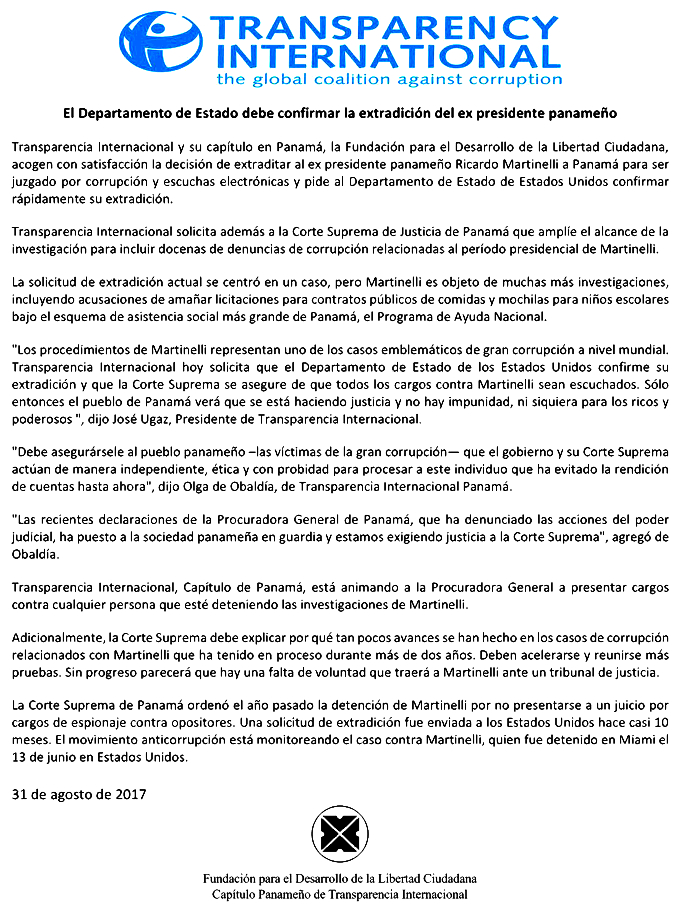
~ ~ ~
Estos anuncios son interactivos. Toque en ellos para seguir a las páginas de web

photos and note by Eric Jackson
Market Day! In Anton’s corregimiento of Juan Diaz, barring any conflicting event or holiday weekend that might alter the time and place, it’s on Thursday mornings at the corregiduria. That’s when the men and women of the Agricultural Marketing Institute (IMA, by its Spanish initials) comes by to sell whatever the week’s selection of Panamanian food is on sale. The national rice harvest is underway, but there will still be a shortage that will be made up by imports limited by regulations and there was no rice on this day. Plenty of noodles, but your editor’s noodle stash is well stocked at the moment. Sugar and salt? Shouldn’t be eating those things so none of that this time. The IMA people know the regular customers’ usual food preferences, so when the broccoli was not jet on display its availability was mentioned.
Compared to a few years ago, the price of vegetables is outrageously high. But IMA prices still make things more affordable for Panamanian and foreign residents alike. Might it be the case that in some other communities the foreigners would be mortally embarrassed to shop alongside the plebeians who are IMA regulars? Might newcomers not know the custom when it gets crowded, for a separate and somewhat faster line for the senior citizens, pregnant women and disabled? If one is to make Panama his or her new home, it’s worth it to learn such customs and set aside the fears of snobbery to which food stamp users get subjected in some US communities. This is Panama. Assimilate and enjoy!
As it happened, along with the editor the only other native English speaker in the village, a teacher of Afro-Antillean roots, was there to shop. Both of us remember days in Colon and both of us are well enough read, so between American English and Caribbean English there was no communications barrier. The slippery mud footpath between our street and the corregiduria? Now THAT’S a barrier that sort of scares us both. But not enough to keep us from market day.
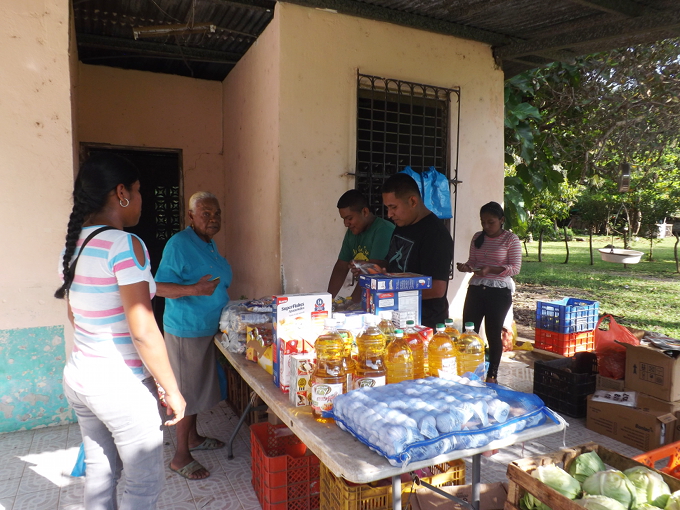
La Estrella, Prácticos de la ACP piden anular pacto con remolcadores privados
The Guardian, Russian tanker crosses Arctic without an icebreaker
Huffington Post, How a Nicaragua Canal sparked a woman’s fight
Bloomberg, New ships hold natural gas longer
Curaçao Chronicle, Copa nearly alone in serving Venezuela
ANP, Panamá quiere tener un vuelo directo a Londres
Willies, United Airlines solved my Hurricane Harvey dilemma
RPC, Panamá va con todo a la Batalla del Azteca
TVN, Penedo será baja para dos partidos
La Prensa, Jennisín Rosanía gana medalla de plata en el Mundial de Jiu Jitsu
PR, Bondholders sell most condo units at Trump Ocean Club
Xinhua, Britain to boost trade with Panama and Colombia
RPP, Odebrecht vende hidroeléctrica en Perú a consorcio chino
UN News Center, Latin America and Caribbean at difficult juncture
Rivera León, Latin America’s innovation potential is largely untapped
PR, A win for privacy is a win for the web
CNBC, Fitch: US ‘AAA’ rating at risk if debt ceiling not raised
Eos, Barro Colorado’s tallest trees die mostly from lighting
Phys.org, Evolutionary arms ‘chase’
Science, Proofs that the first Americans arrived by boat
E&N, ¿Robots asesinos? Elon Musk advierte a la ONU de su creación
The Guardian, Botched surveillance may be behind injuries at US embassy in Cuba
CNRS News, What makes the Earth’s mantle flow?
Mongabay, Orange crop waste shows potential to restore tropical forests
La Estrella, Lluvias provocan nuevas inundaciones en la ciudad de Panamá
La Prensa, Delator dice que más exministros recibieron coimas
La Estrella, Las treinta sociedades de la ‘trama Odebrecht’
Telemetro, Abogado habla sobre el caso Financial Pacific
Cubanet, Panamá deporta a 13 cubanos de vuelta a Colombia
The Intercept, New details on US role in 2009 Honduran coup
Xinhua, Ecuador’s VP barred from leaving country due to Odebrecht case
Globovision, Capriles habría recibido $15 millones por parte de Odebrecht
Jamaica Observer, Venezuela’s ex-AG says Maduro involved in Odebrecht case
BBC, Guatemala court overrules order to expel UN official
The Guardian, Brazilian court blocks abolition of vast Amazon reserve
Huffington Post, White House ditches equal pay rule
Democracy Now!, The Mercers and the dark money behind Trump
Biden, We are living through a battle for the soul of this nation
Electronic Frontier Foundation, Fighting neo-nazis and the future of free expression
Klein, Now is the time to talk about climate change
Smart, The clash of the data titans
O’Neil, The era of blind faith in big data must end
Gurumurthy & Chami, The right to privacy in digital times
Hamilton, To Russia with love
Fischer, The new nuclear danger
FRENADESO, El consuegro del hombre más acaudalado del país es preso
Blades, Maduro cancela gira de Dudamel
Jackson, Edmonston & Bonilla, La visita de Pence a Panamá
Gandásegui, Universitarios rechazan visita de Pence
The Seattle Times, Friends honor artist’s last wishes with a water ballet
OZY, Mexican satirist redefining the tone of Latin America’s political conversation
Notre Dame News, Digital library documents modern Latin American Catholicism
BBC, Brooklyn’s Photoville photography festival
The New York Times, A changing street in Panama City

Huracán Harvey acaba de ahogar el sureste de Texas. La tormenta ganó fuerza mientras cruzaba las aguas anormalmente cálidas del Golfo de México y creció hasta ser un huracán de categoría 4. Para empeorar las cosas, Harvey también llegó en los talones de un agosto increíblemente húmedo en la región, y la humedad del suelo ya estaba por encima de la media. Incluso después de que se aterizó y se debilitó a ser una tormenta tropical, Harvey prometió volcar otro pie o dos (un medio metro) de lluvia en la región.
Por lo menos cinco muertes y docenas de lesiones fueron reportadas en los primeros días de la tormenta. La gente se refugiaba encima de sus techos y necesitaba rescates dramáticos. Además de los costos humanos, los costos económicos son asombrosos: JPMorgan estimó que las pérdidas eventuales aseguradas podrían estar en cualquier lugar de $10 mil millones a $20 mil millones. Bloomberg informó que los costos totales podían montarse a $30 mil millones, cuando se tienen en cuenta los impactos en los sectores de trabajo, transporte y energía del área. El Programa Nacional de Seguro de Inundación, que ya tiene $24 mil millones en deuda debido a la devastación causada por el Huracán Sandy y el Huracán Katrina, no está nada en absoluto preparado para responder a los daños.
En tiempos como estos, tenemos que preguntarnos: ¿cuántas tormentas más nos obligarán a medir la lluvia en pies en lugar de pulgadas, en metros en lugar de centímetros? ¿Cuántos billones de dólares más de agobio pondremos en el Programa Nacional de Seguro de Inundaciones? ¿Cuántas personas más estamos dispuestos a desplazar de sus hogares, o perder completamente, en eventos meteorológicos extremos como estos?
Todo esto básicamente se reduce a la misma pregunta: ¿Por cuántos años más vamos a despedir los gases de efecto invernadero en la atmósfera con impunidad? Porque mientras estemos haciendo eso, estamos pidiendo más de lo mismo—y peor.
Por supuesto, el cambio climático no puede explicar ninguna tormenta específica. Pero es innegable que un mundo más cálido y húmedo juega un papel en la intensificación de las tormentas como el Huracán Harvey. Kevin Trenberth, un científico senior del Centro Nacional de Investigación Atmosférica de los Estados Unidos, dijo que “el principal combustible para la tormenta” era el agua tibia en el Golfo–tanto como 7,2 grados Fahrenheit por encima de la media. “Aunque estas tormentas ocurren naturalmente, la tormenta tiende a ser más intensa, tal vez un poco más grande, más duradera, y con precipitaciones mucho más pesadas” debido a esas aguas más cálidas, dijo.
Está claro que hemos pasado la etapa de sólo cambiar unas bombillas. Necesitamos una legislación amplia para alejar el mercado de los gases de efecto invernadero que causan el cambio climático. Poner un precio sobre el carbono es el único movimiento legislativo que coincide con la escala del problema al que nos enfrentamos. Una ley nacional que pone un precio al carbono podría requerir que las compañías de combustibles fósiles paguen una cuota por cada tonelada de dióxido de carbono o emisiones equivalentes. A medida que la tarifa sube cada año, y como las empresas se ocupan de sus balances finales, el mercado rápidamente escogerá las opciones bajas en o sin carbono. Si todos esos ingresos se devolvieran por igual a los hogares americanos en forma de dividendos, los estudios muestran que estimularía la economía y traería millones de puestos de trabajo. Y, por supuesto, impulsaría una reducción en nuestras emisiones y nos pondría en un curso para estabilizar nuestro clima.
Este tipo de plan ya tiene un importante apoyo conservador. El Consejo de Liderazgo Climático, encabezado por los estadistas republicanos James Baker, Henry Paulson, George Shultz y otros, publicó “El caso conservador de los dividendos de carbono” a principios de este año. Explican que la fijación de precios de carbono y la devolución de los ingresos a los estadounidenses “fortalecerá nuestra economía, reducirá la reglamentación, ayudará a los estadounidenses de clase obrera, reducirá el tamaño del gobierno y fomentará la seguridad nacional”.
Republicanos actualmente en el Congreso están tomando nota de la necesidad de la acción climática, también. El representante republicano de Florida, Carlos Curbelo, vio a Miami inundando y escuchó los gritos de sus electores, así que respondió formando el Caucus Bipartidista de Soluciones Climáticas junto al representante demócrata de Florida, Ted Deutch. Ahora el grupo tiene un total de 52 republicanos y demócratas trabajando juntos, muchos de los cuales han visto impactos climáticos en sus propios distritos y están dispuestos a ponerse serios sobre la acción climática.
Después del Huracán Harvey, quizás los miembros de la delegación de Texas estarán listos para apropiarse de sus asientos en el Caucus. No esperaremos ociosamente para ver cuántos días más de devastación va a causar en nuestro país nuestro inestable clima. Al contrario, queremos ver cuántos representantes se suman y dan un paso al frente en el Congreso.
Mark Reynolds es el Director Ejecutivo de Ciudadanos por un Clima Vivible (Citizens’ Climate Lobby). Traducido por Tamara Kellogg.
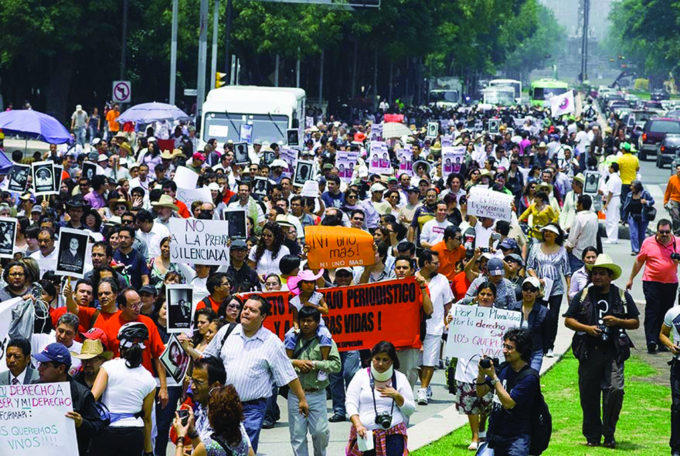
On August 30, the eve of International Day of the Victims of Enforced Disappearances, Reporters Without Borders (RSF) reveals that a growing number of states are finding new ways to make troublesome journalists disappear.
Dawit Isaak, Jean Bigirimana, Akram Raslan and Guy-André Kieffer are all journalists who suddenly went missing, leaving their loved ones in a never-ending state of anxiety. All were the victims of “enforced disappearance,” a practice in which governments are directly or indirectly implicated.
It is governments, individuals, or groups acting with the state’s support or acquiescence who arrest, abduct, detain and then conceal the fate of the disruptive journalist — the voice that must be silenced. Although discreetly perpetrated with complete impunity by more and more regimes, this multiform crime has nonetheless been recognized since 2002 as a crime against humanity.
“China invented the ‘enforced vacation,’ Syria developed mass disappearances and Africa copied South America, which sadly pioneered enforced disappearance,” RSF secretary-general Christophe Deloire said.
“Instead of decreasing, this barbaric practice is diversifying, spreading all over the world and creating more and more victims among journalists and bloggers every year. We deplore the impunity usually enjoyed by the perpetrators of these crimes and the lack of commitment by democratic governments to bring them to an end.”
The macabre tradition of “desaparecidos” now worldwide
Under the South American military dictatorships of the 1960s and 70s, the practice of “disappearing” critics was so widespread that the Spanish word “desaparecidos” (disappeared) entered the international vocabulary for the victims of state terror. Under General Videla, Argentina got rid of no fewer than 91 journalists from 1976 to 1980. More than 18 journalists disappeared in Brazil and Chile from 1973 to 1975.
Although the level of violence against the media is still very high, the phenomenon has abated in Latin America, except Mexico. Since 2000, at least 23 journalists have disappeared in Mexico and all the cases have remained unpunished. The drug cartels have usually been blamed but, in some cases, families and friends have suspected that state agents were involved.
The practice has meanwhile spread to countries such as Algeria, the Gulf States, Eritrea, Pakistan, Bangladesh, Iran, Turkmenistan, Chechnya, and eastern Ukraine. This list is far from exhaustive. In all continents of the world, enforced disappearance has become a favorite tool of authoritarian regimes for discreetly eliminating opponents without being held to account.
Mass disappearances in Syria
Under Bashar al-Assad, extra-judicial executions were already common in Syria before 2011. But since then, enforced disappearance has become an industry with at least 65,000 victims, many of them journalists and bloggers, according to the estimates of the Syrian Network for Human Rights. The issue became so severe that the United Nations Security Council had to adopt a resolution condemning these atrocities in February 2014.
Journalists and free speech defenders are leading targets in Syria. Both the regime and the rival armed factions want to neutralize or eliminate all witnesses of the conflict. Arrest is routinely followed by torture and often leads to execution. Akram Raslan, a cartoonist arrested by the Syrian security forces in October 2012, died by torture a year later after a secret trial before an anti-terrorist court with no witnesses and no legal defense. Another two years went by before his death was confirmed.
The families of the victims, deprived of information and risking the same fate if they complain, are reduced to carrying out their own investigations based on rumors. The family of Bassel Khartabil, a software developer and online free speech activist, received no news of him for two years. They recently learned that he was executed in 2015, shortly after his removal from a Damascus prison to an unknown location.
“State abductions” to bypass the law
Abduction allows government officials to circumvent legal provisions and procedural codes guaranteeing the right of defense, provision of information to the family, the presence of a lawyer, medical examination, limits on the duration of pre-trial detention and so on. Officially, China has placed no restrictions on the movements of Liu Xia, the widow of Nobel peace laureate Liu Xiaobo. In practice, the authorities are holding her incommunicado, with the result that her lawyer reported her “enforced disappearance” to the United Nations on August 3.
The Chinese government has long been providing certain dissidents with “enforced vacations” in the southern resort of Hainan, especially on the eve of events such as the Olympic Games, a G20 summit, Tiananmen anniversaries, and Communist Party Congresses, which might provide them with a forum. Such kid-glove treatment is unfortunately reserved for those who are protected by their international notoriety. Anonymous dissidents spend their “vacations” in prison cells, where the beatings, torture, and denial of medical care to which they are subjected may leave them unrecognizable.
Abduction has been used systematically with human rights and free speech defenders since Xi Jinping took over as China’s president in 2013. Two citizen-journalists who are also partners, 2016 RSF Press Freedom laureates Lu Yuyu and Li Tingyu, were abducted by plainclothesmen in June of last year and were held incommunicado for several weeks before being formally arrested.
Murdered to prevent revelations
The paranoia of leaders often makes them confuse journalists with spies or terrorists. Or they are just seeking pretexts to arrest them. Jean Bigirimana, a journalist working for Burundi’s last independent media outlet, Iwacu, disappeared into a thin air when he went to meet one of his contacts on July 22, 2016. A year later, no one knows whether he is still alive or where he might be held, despite a petition that has gathered more than 13,000 signatures.
Journalists and bloggers are usually targeted to prevent them from publishing information that would humiliate the authorities. Guy-André Kieffer, a journalist with French and Canadian dual nationality who used to work for Libération and La Tribune, was abducted in Côte d’Ivoire in April 2004 while investigating suspicious practices in the production and export of cocoa. Then President Laurent Gbagbo is suspected of having him murdered to avoid being implicated in these practices.
Autocrats value abduction all the more highly because journalists are usually discreet about their reporting in order to protect their sources. When the journalist and the documents he or she was gathering disappear, the secrets are safe. Because of the possibility, albeit slim, that their reporters are still alive, news organizations concentrate on trying to get them released and do not publish their notes because that could sign their death warrant.
Remarkably ineffective investigations
“No proof, no case,” lawyers often say. The common feature in disappearances of journalists is the remarkably ineffective way the authorities investigate them, with a carelessness often bordering on sabotage. The families of the victims are all the more helpless when, as is often the case, the perpetrators are capable of putting pressure on witnesses and investigators and even getting the case closed.
The case of Ahmed Rilwan Abdulla in the Maldives is instructive. This reporter for Minivan News, an independent online newspaper, disappeared on August 8, 2014. He was known for covering the three subjects that make people angry in this island state — religion, politics, and the environment. After he was reported missing, the authorities waiting 29 hours before going to his apartment and 11 days before visiting his office. The police “forgot” to tell his family that they found a knife at the place where he is thought to have disappeared. They reluctantly acknowledged recently that he might have been kidnapped by an extremist group, but refrained from going into any detail.
Even when they are not directly implicated in their disappearance, the authorities assign journalists blame for their own fate. Their refusal to assist then becomes a way of dissuading fellow journalists from “putting their noses where they shouldn’t.” For three years, Tunisian civil society and human rights groups have been condemning the passivity and indifference surrounding the disappearance of Tunisian journalists Sofiane Chourabi and Nadhir Guetari in Libya on September 8, 2014. In Tunis, the main measure taken by the authorities was to announce the creation of a mixed commission of enquiry a year after their disappearance. This commission has yet to materialize.
In Colombia, the police did little to find Borja Lázaro, a Spanish freelance photographer who disappeared in the early hours of January 8, 2014 in a drug-trafficking region where former paramilitaries operate. Although the Spanish authorities interceded, the investigation drew a complete blank and is now officially closed.
Not letting the victims be forgotten
Dawit Isaak is a journalist with Swedish and Eritrean dual nationality who helped found the Eritrean newspaper Setit and was awarded UNESCO’s Guillermo Cano World Press Freedom Prize in 2017. He was arrested along with ten other journalists on trumped-up terrorism charges in 2011 and has been held incommunicado ever since, without access to his family or lawyers. Information obtained by RSF suggests that seven of these 11 journalists have already died in detention. According to the account of a former prison guard in 2010, the last time Isaak was seen alive, the journalists had been kept in inhuman conditions — handcuffed, isolated, and exposed to terrible heat.
RSF has undertaken countless initiatives to prevent Isaak’s case from being forgotten, including a petition in 2002, many press releases and several appeals to the European Parliament. RSF sent an appeal to Eritrea’s constitutional court in 2011 but never received a response. In 2012, RSF referred the case to the African Commission on Human and Peoples’ Rights. Last year, RSF wrote an open letter to President Issayas Afeworki and recently launched a second petition for Isaak’s release.
In 2015, RSF formally referred the disappearances of journalists in ten countries to the UN Working Group on Enforced or Involuntary Disappearances. This entity’s findings must remain confidential in order to ensure the effectiveness of its investigations and the safety of the victims, but RSF stresses the importance of its work behind the scenes in centralizing cases of disappearances and in pressuring states with the aim of obtaining releases. RSF urges governments to provide the Working Group with the resources it needs to perform its mission.
RSF also believes it is crucial for all countries to ratify the International Convention for the Protection of All Persons from Enforced Disappearance, which the UN General Assembly adopted ten years ago. So far only half of the UN’s member states have signed it and only 57 have ratified it. The leading recalcitrants include four of the Security Council’s five permanent members: China, Russia, the United Kingdom, and the United States — all known for sometimes resorting to targeted extra-judicial abduction. It seems they are reluctant to deprive their intelligence agencies of such a handy tool.
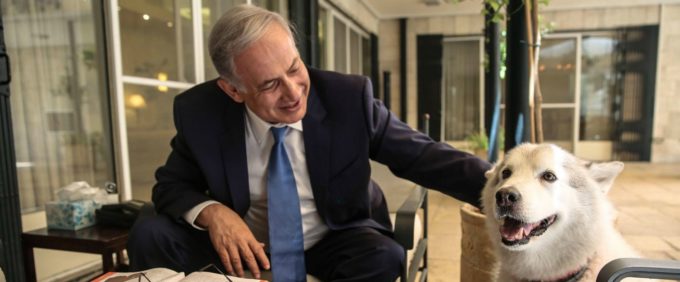
The spectacle is almost bizarre: a political party refuses to accept new members. And not just a few individuals, but tens of thousands. And not just any party, but the Likud (“Unification”), the main force in Israel’s governing coalition.
Strange? But there is method in this madness. It may soon come before Israel’s highest court.
The present leaders of the party, Binyamin Netanyahu and his fellows, are afraid that the people who are now seeking to register as Likud members are really settlers in the occupied territories, who want to take over the Likud, while in practice remaining loyal to their own parties, which are even more extremist.
One of the present Likud members of the Knesset has submitted a bill that may well be unique in the world. It arises from the fear that these new Likud members will not vote for the Likud in the general elections. To counter this possibility, the bill says that when a new member registers in the Likud party, their name will be struck from the general election voter registry, and they will be recorded as having voted for the Likud.
This is manifestly unconstitutional, since it negates the secrecy of the ballot. The legal advisor of the Knesset will probably block it. If not, it will go to the Supreme Court.
This all shows that the Likud is really a curious kind of bird. And not from today.
Years ago, a leading French journalist came to me during an Israeli election campaign. I directed him to an election rally of Menachem Begin’s.
When he came back he was bewildered. “I don’t understand it,” he exclaimed. “When he was talking about the Arabs, he sounded like a rabid fascist. When he was talking about social affairs, he sounded like a moderate liberal. How can this fit together?”
“Begin is not a great thinker,” I explained to him. “All the ideology of the Likud goes back to Vladimir Jabotinsky.”
Vladimir (or Ze’ev) Jabotinsky was the founder of the “revisionist” party, the parent of the Herut Party, which was the parent of the present-day Likud. He was born in 1880 in Odessa in the Ukraine. When he was young man he was sent as a journalist to Italy, a country that had attained its freedom not so long before.
The Italian liberation movement was an unusual mixture of extreme patriotism and liberal social ideas. This fixed the young Jabotinsky’s political outlook for life.
He was a very captivating person, extremely gifted in several fields. He wrote a novel (about the Biblical hero Samson), translated Edgar Allen Poe’s poems into Hebrew, was a brilliant orator and gifted journalist, wrote songs and much more. In World War I he helped form Jewish battalions in the British army and was a junior officer in the conquest of Palestine.
A few years later the British partitioned Palestine and set up the separate Arab emirate of Transjordan. Jabotinsky objected and founded the ultra-Zionist “Revisionist Party,” which demanded the “revision” of this decision.
Jabotinsky loathed the dour, socialist “pioneers” who dominated the Zionist community in Palestine and who hated him. I suspect that he was not too unhappy when the British kicked him out of the country. David Ben-Gurion called him “fascist” — though, as an Italy-lover, Jabotinsky loathed Benito Mussolini.
During those years Jabotinsky was a globe-trotting agitator, who wrote a weekly article which I read piously. I admired his clear, logical style. His movement grew in several countries, especially Poland.
In Palestine, Jabotinsky’s Revisionist movement remained a small and isolated minority. However, when violent Jewish-Arab clashes broke out, his movement established the Irgun, an armed underground organization. Jabotinsky was its nominal commander-in-chief. Largely because of him, I joined when I was hardly 15 years old.
In early 1939, Jabotinsky’s followers around the world assembled in Warsaw. The clouds of war were already gathering, but Jabotinsky proclaimed that war was impossible — modern arms were much too murderous. When one of his Polish followers, a youngster called Menachem Begin, dared to contradict him, the leader acidly responded: “Sir, if I had your convictions, I would jump into the Vistula!”
However, World War II did indeed break out. Jabotinsky fled to the United States, were he died aged 59 of a heart attack. Begin, who had not jumped into the river, eventually reached Palestine and was appointed commander of the Irgun, which became one of the most successful terrorist organizations in the world.
When the State of Israel was born, Begin became the leader of the opposition and a stickler for democracy. He discarded the “revisionist” party and created his own Herut (“Freedom”) party, at the head of which he lost eight consecutive election campaigns.
When he reached power at last, in 1977, he surprised the world by making peace with Egypt, the most powerful Arab country. I was not surprised at all.
Begin was not a brilliant personality like Jabotinsky. He followed his master religiously. Jabotinsky’s ideology was geographical: “Eretz Israel on both sides of the Jordan.” The map did not include the Sinai peninsula, so Begin had no qualms about giving it back to Egypt. (It also did not include the Golan heights, which Begin would have returned to Syria without hesitation.)
With time, Begin and his followers forgot about the land beyond the Jordan river. They still sang the song written by Jabotinsky (“The Jordan has two banks — the one belongs to us and so does the other”), but realpolitik is stronger than songs. The Kingdom of Jordan is now one of Israel’s most important allies, and Israel has saved it from extinction several times.
However, the claim that Jordan, like the West Bank, must be part of the Jewish State appears prominently in the Likud party program. Everybody had forgotten this long ago, until this week.
Binyamin Netanyahu’s assistants, who are fighting to prevent the “new applicants” from becoming members of their party, demand that they declare their full acceptance of all parts of the official Likud program — including the demand that Jordan become a part of Israel.
AS A personality, Netanyahu is far below Begin, much as Begin was far below Jabotinsky. There never was a whiff of personal misbehavior about Begin, who was famous for his modest standard life-style, after risking his life every minute for years. Netanyahu is surrounded by a strong smell of corruption. Several investigations against him and his wife Sarah are in progress, each of which could well land him in prison.
Jabotinsky would have looked upon him with disgust.
However…
A Jewish joke tells about the death of the rich man in the ghetto. According to custom, somebody had to eulogize him, presenting him positively. Nobody could be found to fulfill this duty. At long last, one man volunteered.
“We all know that Rabbi Moshe was a loathsome person,” he said, “stinking rich, mean and cruel. But compared to his son, he was an angel!”
Something like this is happening in Israel now. The spotlight is on Ya’ir, Netanyahu’s 26-year old elder son.
“Bibi” has already been in power for 12 nonconsecutive years and behaves like a king. “Sarah’le,” his wife, behaves like a queen, in the style of Marie-Antoinette. In popular parlance, Ya’ir is the “crown-prince.”
A very unruly prince. He lives with his parents in the official residence and behaves like a spoiled brat. He is trailed everywhere by bodyguards provided by the state. He has no visible job. And during the last few days, he has become notorious.
Like Donald the Trump, Ya’ir spews abusive comments in all directions on the internet. For example, he calls “The New Israel Fund,” a foundation that supports leftist groups, “The New Fund for the Destruction of Israel.”
The latest episode concerns the by-law that orders dog owners to pick up the excrement of their animals in public places. Ya’ir was walking the royal dog, the now famous Kaya, without picking up her excrement in the street. When a lady stopped him and demanded that he follow the law, he made a lewd gesture — which the lady duly photographed.
Jabotinsky, Begin, Bibi, Ya’ir — quelle difference!

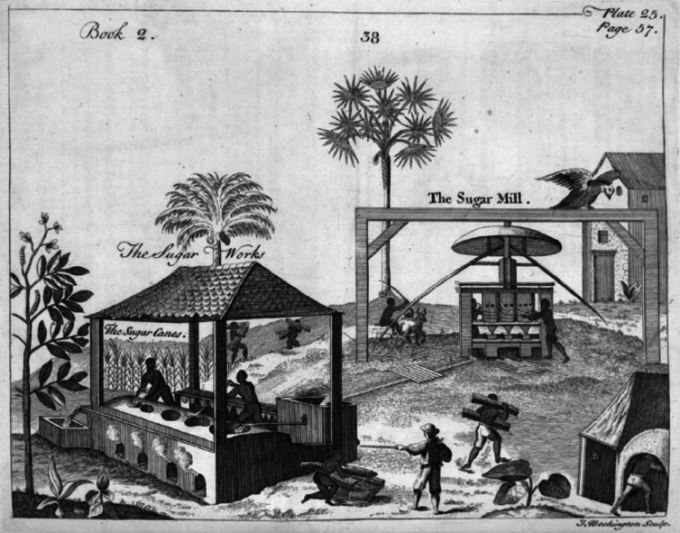
In the natural course of events, humans fall sick and die. Patients hope for miraculous remedies to restore their health.
We all want our medicines to work for us in wondrous ways. But how are human subjects chosen for experiments? Who bears the burden of risk? What ethical brakes keep scientific enthusiasm from overwhelming vulnerable populations? Who goes first?
Today, the question of underrepresented minorities in medical experimentation is still volatile. Minorities, especially African-Americans in the United States, tend to be simultaneously underrepresented in medical research and historically exploited in experimentation.
My new book, “Secret Cures of Slaves: People, Plants, and Medicine in the Eighteenth-Century Atlantic,” zeroes in on human experimentation on Caribbean slave plantations in the late 1700s. Were slaves on New World sugar plantations used as human guinea pigs in the same way African-Americans were in the American South centuries later?
History is littered with exploitative experiments in humans. The Tuskegee syphilis experiment is probably one of the most infamous. From 1932 to 1972, the US Public Health Service offered 600 African-American men food, free medical care and burial insurance for participating in the study. About 400 of these poor Alabamans had syphilis. The government studied the natural progression of the disease until death, even though penicillin was an easy, cheap and safe cure.
This type of medical testing — empirical study through controlled trials — began in earnest in the late 1700s. Many poor souls were subjected to medical testing. In Europe and its American colonies, drug trials tended to overselect subjects from the poor and wards of the state, such as prisoners, hospital patients and orphans. Most experimental subjects came from the same groups used for dissection — that is, persons with no next of kin to insist on burial rites or to pay for expensive cures.
I was surprised to learn that, in many instances, doctors did not — as might be expected — use slaves as guinea pigs. Slaves were valuable property of powerful masters. The master’s will prevailed over a doctor’s advice.
A British physician in Jamaica reported he had developed a “perfect cure” for yaws, a horrid tropical infection of the skin, bones and joints bred of poverty and poor sanitation. The experimental treatment was slated to take three or four months. The masters, not caring to “lose their Slaves’ labor” for so long, denied the doctor’s request.
However, numerous slaves were exploited in medical experiments at this time. John Quier, a British doctor working in rural Jamaica, freely experimented with smallpox inoculation in a population of 850 slaves during the 1768 epidemic. Inoculation, a precursor to vaccine, involved inducing a light case of the disease in a healthy person in hopes of immunizing that person for life.
Quier was employed by slave owners and would have inoculated plantation slaves for smallpox, with or without his scientific experiments. In all instances, masters had the final word. There was no issue of slave consent, or, for that matter, often physician consent.
But Quier did not simply inoculate to prevent disease. We see from his reports that he used slaves to explore questions that doctors in Europe dared not. He wanted to know, for example, whether one could safely inoculate menstruating or pregnant women. He also wanted to know if it was safe to inoculate newborn infants or a person already suffering from dropsy, yaws or fever and the like.
In his letters to colleagues in London, Quier reported that, to answer these questions, he sometimes inoculated repeatedly in the same person and at his own expense. Throughout his experiments, when pressed, Quier followed what he considered of interest to science — and not necessarily what was best for the human being standing in front of him.
The history of human experimentation is not merely about subjects used and misused, but also about subjects excluded from testing — and, as a consequence, from the potential benefits of a cure.
Today, medical researchers struggle to include women in clinical trials. It’s impossible to say when women were defined out as proper subjects of human research. But women were regularly included in medical research in the 18th century.
In 1721, the iconic Newgate Prison trials in England tested the safety and efficacy of smallpox inoculation. Of the elected six condemned criminals, there were three women and three men, matched as closely as possible for age.
Women also featured in Quier’s experiments, raising explosive questions about differences among women, many of which were about race.
For example, his London colleagues wondered whether his smallpox experiments done on “Negro women” were valid for English women. “Some gentlemen” in London were concerned that experiments done on slave women were not valid for “women of fashion, and of delicate constitutions.” Treatments appropriate for enslaved women, they warned, might well destroy ladies of “delicate habits, …educated in European luxury.”
African, Amerindian and European knowledges mixed on Caribbean sugar plantations.
Europeans had little experience with the tropical disease they encountered in the Caribbean, but Africans did. One of my purposes in this book is to expand our knowledge of African contributions to science.
An extraordinary experiment in 1773 pitted purported slave cures against European treatments in Grenada, a small island south of Barbados. In something of a “cure-off,” a slave’s remedy for yaws was tested against the standard European remedy. Under the master’s careful eye, four slaves were treated by a European-trained surgeon, two by the slave doctor.
The surgeon employed a standard mercurial treatment, which, when taken over several years, tended to leave slaves’ health “broken.” Meanwhile, the slave set to work with methods learned in his “own Country” (presumably Africa). This consisted of sweating his patients “powerfully” twice a day in a cask with a small fire and by giving them a medicine made from two woods, known locally as “Bois Royale and Bois fer.”
The outcome? The slave’s patients were cured within a fortnight; the surgeon’s patients were not. The plantation owner, a man of science, consequently put the man of African origins in charge of all yaws patients in his plantation hospital. In the process, the enslaved man — who remained nameless and faceless throughout — was elevated in status to a “Negro Dr.”
The Atlantic world represents a step in globalization, the potential enrichment of the human experience when worlds collide. But the extinction of peoples, such as the Amerindians in the Greater Antilles, coupled with the fear and secrecy bred in the enslavement of Africans, meant that knowledge did not circulate freely. Amerindians and enslaved Africans strategically held many secrets. Though hidden or suppressed, much of this knowledge can still be found today in local Caribbean remedies.
Bertrand Bajon, a French physician working in Cayenne, envied the “numerous plant cures” known to “Indians and Negroes.” Bajon pleaded that “for the good of humanity” slaves be obliged to “communicate the plants he [or she] used and the manner in which they are employed.” In return, Bajon recommended the slave be offered freedom — but not until “a great number of experiments confirmed the cure’s virtue.”
We must remember that knowledge created in this period did not respond to science for its own sake, but was fired in the colonial crucible of conquest, slavery and violence.
Londa Schiebinger, Professor of History of Science, Stanford University
This article was originally published on The Conversation. Read the original article.
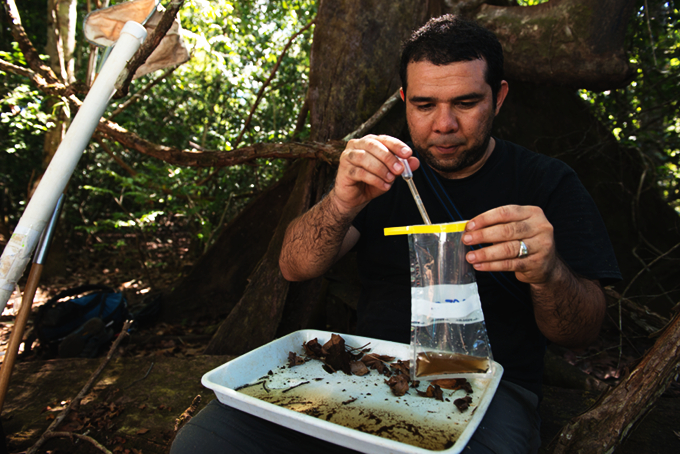
Un estudio realizado recientemente por científicos del Smithsonian, el gobierno panameño y la Agencia de Protección Ambiental de los Estados Unidos de América, entre otras instituciones internacionales, concluye que la conservación de los bosques tropicales maduros es “altamente recomendada” para prevenir nuevos brotes de enfermedades virales y parasitarias transmitidas por mosquitos.
“Encontramos que menos especies de mosquitos, que son conocidos por portar patógenos causantes de enfermedades, viven en áreas boscosas en comparación con las áreas perturbadas”, comentó José Loaiza, científico del Instituto de Investigaciones Científicas y Servicios de Alta Tecnología de Panamá (INDICASAT-AIP) e Investigador Asociado del Instituto Smithsonian de Investigaciones Tropicales (STRI) en Panamá. “Es más probable que las especies de mosquitos de sitios forestales alterados transmitan enfermedades que las de mosquitos nativos de un área de bosque tropical maduro”.
El equipo de Loaiza utilizó códigos de barras de ADN para identificar alrededor de 8,000 larvas de mosquitos que representaban más de 50 especies, colectadas en contenedores naturales y artificiales de agua en 245 sitios donde el bosque tropical de tierras bajas estaba muy perturbado (Las Pavas en la orilla oeste del Canal), medianamente perturbado (Achiote, en la orilla oriental del Canal) y sin perturbaciones (en la estación de investigación del Smithsonian en Isla Barro Colorado).
El intento de los franceses de construir el Canal de Panamá fracasó porque nadie sabía cómo se propagaba la malaria y la fiebre amarilla. El descubrimiento en Cuba de que los mosquitos llevaban agentes causantes de enfermedades hizo posible que los Estados Unidos completara el Canal Interoceánico en 1914.
Debido a que el control de los mosquitos fue tan importante para el éxito del proyecto del Canal de Panamá durante todo el siglo XX, existe en el país una gran cantidad de información disponible sobre los mosquitos transmisores de enfermedades. El Catálogo de Mosquitos de la Unidad de Biosistemática del Walter Reed y otras fuentes bibliográficas registraron 286 especies de Culicidae (la familia del Mosquito) en Panamá. Anopheles albimanus es el principal vector de la malaria en Centroamérica. Culex nigripalpus es el principal vector del virus de la encefalitis equina oriental en los Estados Unidos y Culex pedroi es el principal vector del virus de la encefalitis equina oriental en Perú. Todas estas especies de mosquitos y enfermedades ocurren en Panamá.
“Las especies de mosquitos portadores de patógenos causantes de enfermedades prevalecen en entornos forestales perturbados, pero son casi inexistentes en sitios forestales no perturbados como la estación de investigación del Smithsonian en Isla Barro Colorado”, comentó Oris Sanjur, directora asociada de STRI para la administración científica y bióloga molecular participante en el estudio. “Nuestros resultados tienen implicaciones importantes para la prevención y el control de las enfermedades tropicales. Este es un conocimiento vital a medida que avanza el calentamiento global y los organismos de enfermedades tropicales se expanden hacia nuevas áreas”.
Los investigadores probaron un modelo ecológico controversial que pronosticaba que la mayor diversidad de especies de mosquitos debería ocurrir en bosques medianamente perturbados, conocido como la Hipótesis de los Disturbios Intermedios. No encontraron que esto fuera cierto.
“Puede ser posible sustituir a los mosquitos transmisores de enfermedades introduciendo otras especies que compitan con ellas en la fase larvaria”, comentó Loaiza.
El estudio fue realizado bajo un acuerdo entre el Smithsonian y el Instituto de Investigación Walter Reed del Ejército de los Estados Unidos con fondos de la Agencia de Protección Ambiental de los Estados Unidos, la SENACYT y el Programa BIOTA Fapesp de la Organización Brasileña de Investigación de Sao Paulo.
Vea Loaiza, J.R., Dutari L.C., Rovira, J.R., Sanjur, O.I., et al. 2017. Disturbance and mosquito diversity in the lowland tropical rainforest of central Panama. Scientific Reports. 7:7248 doi:10.1038/s41598-017-07476-2

President Trump’s new strategy that would presumably win the war against the Taliban in Afghanistan is doomed to fail, just like Bush’s and Obama’s before him. At best, the reported dispatch of an additional 4,000 American troops as recommended by his security chiefs will prevent the total collapse of Afghanistan and thwart the Taliban from winning. Given the complex nature of the conflict, however, the status quo will not change in any significant way.
One might think that after 16 years, the United States should have learned that the Taliban will not be defeated. The only solution rests on a negotiated agreement with the Taliban while inviting the Afghan tribes to do the heavy lifting, as they are the only party who can effectively work with the Taliban to reach an enduring agreement. Together, they can fight against the various terrorist groups that have converged on Afghanistan, because they want to end foreign interventions that have done nothing but cause socio-political havoc and instability since the Soviet invasion in 1979.
The only pointed and correct statement Trump made in his “new strategy” is that the US should not undertake the practice of nation-building, and certainly not dictate how the Afghan people live their lives and govern themselves. The United States, with the support of the tribes, should focus on combating terrorism, especially from al-Qaeda, ISIS, and other radical extremist groups.
The Taliban should receive a clear signal that they are an important part of the new strategy to reach a peace accord, provided they demonstrate their willingness to negotiate in earnest, knowing that otherwise they will have to continue to be engaged in an intractable fight against US forces without any chance of succeeding.
It is true and necessary for the United States to develop strategic partnerships, especially with India and Pakistan, to help in the fight against terrorism, and use its political, economic, and military assets to that end. However, whereas India would be willing to partner with the United States, it is not a given that the besieged Pakistani government will be able to fully commit itself even if it chooses to, because a) the ongoing political turmoil in Islamabad prevents the development of a cohesive policy to combat the plethora of terrorist groups, which makes the task extremely difficult; and b) Pakistan does not want to fight the Taliban knowing that they will sooner or later be a part of the Afghan government (if not in control of it), with which they have to coexist.
For these reasons, it is naïve to think that after 16 years of fighting, dispatching an additional military force of 4,000 soldiers will change anything. In fact, at its peak over 100,000 American soldiers were unable to dramatically change the dynamic of the conflict and create a sustainable political and security structure that would allow US troops to leave.
No one in the Trump administration, including the Pentagon, is offering any convincing argument that additional forces would win the war. At best, they can arrest the continuing advances of the Taliban, which is now in control of nearly half the country.
Although Trump correctly shifted away from a time-based approach and instead linked it to progress made on the ground, this effort will succeed only if the US immediately embraces peace talks while fighting foreign terrorist groups.
To be sure, there will not be a military solution to the Afghan war. Trump has now the opportunity to change the dynamic of the conflict by looking at the Taliban not as the enemy, but as the partner in the search for a sustainable solution.
The sooner the United States accepts this reality the better, so that the US can focus on a practical outcome that can emerge only through negotiations with moderate elements of the Taliban and with full participation of the tribal leaders.
In a conversation I had with Ajmal Khan Zazai, tribal leader and Paramount Chief of Paktia province in Afghanistan (which I discussed in a previous article in July), he noted that previous American military approaches have never had a chance of succeeding, due to their “[obsession] with their version of ‘democracy’ and ‘human rights’… They don’t believe in homegrown or Afghan local solutions led by the tribes…” He emphasized the fact that “Afghanistan is a tribal country, the tribes are the past, present, and the future.” I fully agree that excluding the tribes from this battle against violent extremism, including al-Qaeda and ISIS, will simply not work.
To prevent repeating past mistakes, the Trump administration must now reach out to the tribal chiefs and together develop a strategy that would allow the Taliban to fully participate in peace talks with the objective of reaching a long-term solution.
The chiefs would require US financial assistance to the tune of four to five hundred million dollars a year, over a few years (which is a fraction of what we spend today). The purpose of this would be to recruit and train their own militia to fight their own battles against the assortment of terrorists.
Under such a scenario, the Taliban will have to commit themselves to fight, alongside the Afghan military, against all extremist and terror groups, particularly al-Qaeda and ISIS. Once the Taliban becomes a part of the government, they would develop a vested interest in the stability of Afghanistan, and will have every reason to prevent Pakistan and Iran, in particular, from meddling in the internal affairs of their country.
To be sure, the Taliban are Afghan nationals and will not be dislodged from their own land; likewise, the support of the tribes is essential as they want to take matters into their hands. They know that time is on their side because no foreign power has ever been able to conquer Afghanistan, dominate the country, and change the Afghans’ way of life.
Every foreign power was forced to eventually leave because they could not sustain their conquest or domination. If the US wants to end this debilitating war, it must focus on local forces for a permanent solution and leave Afghanistan sooner than later with some dignity.
Dr. Alon Ben-Meir is a professor of international relations at the Center for Global Affairs at NYU. He teaches courses on international negotiation and Middle Eastern studies.